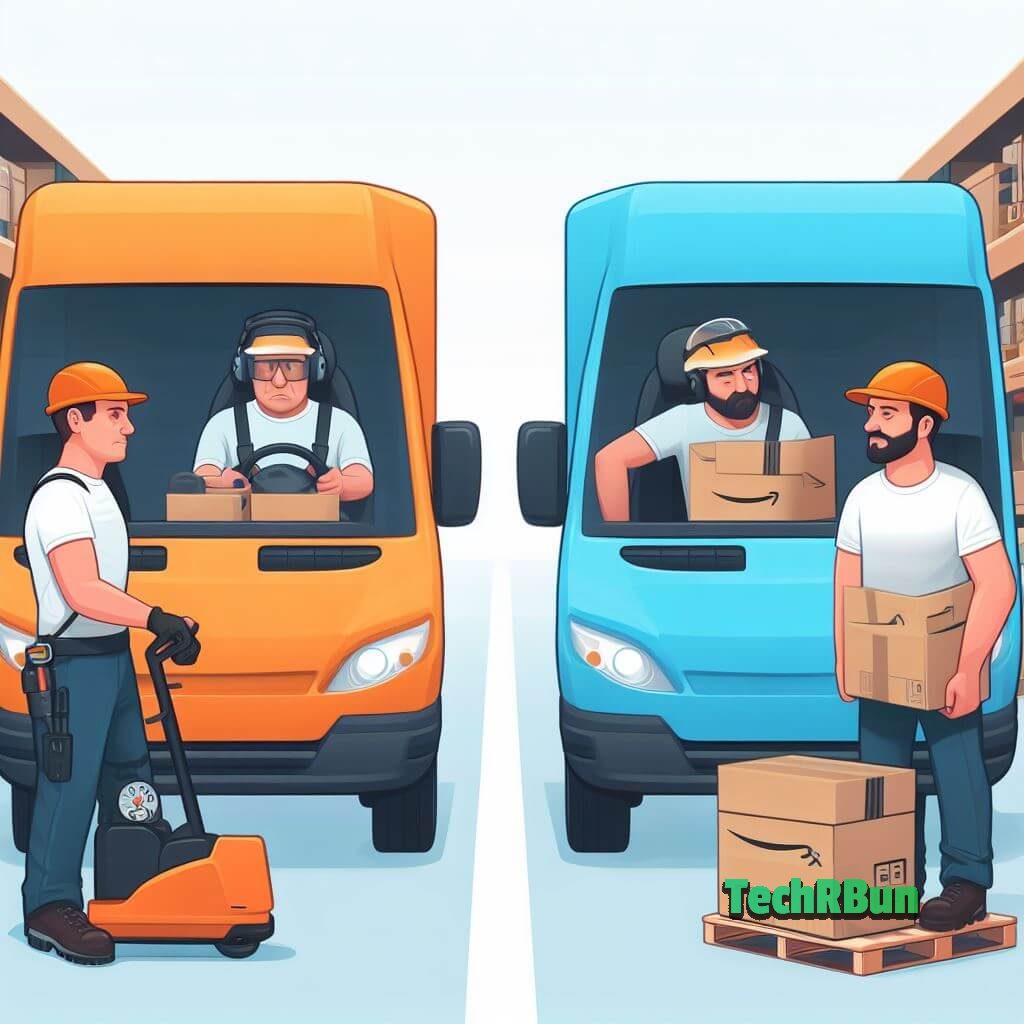
In the digital age, with the proliferation of online shopping and gig economy jobs, companies like Amazon have exponentially expanded their operations, leading to an array of unique job opportunities.
Through the lens of employment within Amazon’s gig economy, this discussion is centered around Amazon Flex and its two principal roles – Amazon Flex Driver and Warehouse Worker.
By offering a comprehensive examination of these roles, the context of their day-to-day tasks, their economic implications, and the impact of broader market trends, this discussion seeks to provide valuable insights for those pondering a career within Amazon Flex.
Table of Contents
- 1 Understanding Amazon Flex
- 2 A Day in the Life of an Amazon Flex Driver
- 3 Life as an Amazon Flex Warehouse Worker
- 3.1 Morning Preparation
- 3.2 Check-In and Safety Protocol
- 3.3 Morning Meeting
- 3.4 Picking and Packing
- 3.5 Packaging and Quality Control
- 3.6 Shipping and Labeling
- 3.7 Loading and Unloading
- 3.8 Breaks
- 3.9 Ongoing Training
- 3.10 Shift Conclusion
- 3.11 Post-Shift Check-Out
- 3.12 Personal Development
- 3.13 Work-Life Balance
- 4 Amazon Flex Driver vs Warehouse Worker: Which Pays More?
- 5 Influence of Market Trends on Amazon Flex Roles
- 6 Conclusion
Understanding Amazon Flex
In today’s dynamic job market, the demand for adaptable work options has surged. The rise of the gig economy has introduced a multitude of employment opportunities, and among these, the Amazon Flex Driver and Amazon Flex Warehouse Worker roles stand out.
This article aims to introduce you to these roles, shedding light on their responsibilities, advantages, and what to anticipate when considering them as potential career choices.
Amazon Flex Driver: The World of Package Delivery
Are you in search of a job that grants you independence over your work hours, allowing you to set your schedule and control your earnings based on your availability?
If so, the role of an Amazon Flex Driver may be a perfect match. Here’s a closer look at what it entails.
- Freedom of Scheduling: As an Amazon Flex Driver, you have the liberty to choose when you work. This means you can fit work around your existing commitments, making it an ideal option for students, part-time job seekers, or anyone looking to earn extra income.
- Independent Contractor Status: You operate as an independent contractor, granting you the freedom to engage with other gig economy platforms concurrently, broadening your income potential.
- Delivery Routes: Drivers utilize the Amazon Flex app to select available delivery blocks and acquire information about their route. Typically, you will collect packages from Amazon delivery stations and deliver them to customers’ locations.
- Earnings Potential: Your income depends on the number of delivery blocks you opt to work. Although rates may vary by location, Amazon Flex drivers can earn competitive pay rates and may even receive tips from satisfied customers.
- Vehicle Requirements: To transport packages, you’ll need a reliable vehicle. In some regions, you can use a bicycle or even make deliveries on foot. Amazon Flex also provides opportunities for individuals without access to a vehicle through the Amazon Prime Now and Amazon Fresh programs.
Amazon Flex Warehouse Worker: The Heart of Fulfillment Centers
If you prefer a structured work environment and enjoy being part of a team, the role of an Amazon Flex Warehouse Worker is an excellent choice.
Here’s what you should know about this position:
- Order Fulfillment: As a Warehouse Worker, you’ll labor in one of Amazon’s advanced fulfillment centers, helping to process customer orders. Your responsibilities include picking, packing, and efficiently shipping products.
- Shift Variety: Amazon offers a range of shift options to accommodate different schedules. Whether you’re a morning person or prefer working at night, you can find a shift that suits your lifestyle.
- Competitive Pay: Amazon is known for its commitment to offering competitive wages and benefits, even for part-time employees. As an Amazon Flex Warehouse Worker, you can expect to be compensated accordingly.
- Safe Work Environment: Amazon prioritizes safety in its fulfillment centers. You will receive training on safety protocols and work in an environment designed to prevent accidents.
- Opportunities for Growth: Amazon is renowned for promoting from within. As a warehouse worker, you can explore opportunities for career advancement within the company.
Choosing the Right Role for You
The decision between becoming an Amazon Flex Driver or an Amazon Flex Warehouse Worker hinges on your lifestyle, preferences, and career objectives. Here are some factors to consider:
- Work Schedule: If you require flexibility and the ability to set your own hours, the Amazon Flex Driver role may be the better fit. If you prefer a more structured schedule, the Warehouse Worker position might be more suitable.
- Work Environment: Consider whether you’d rather work independently (as a driver) or be part of a team (in a warehouse).
- Vehicle: If you possess a reliable vehicle, the driver role may be a natural choice. Otherwise, explore warehouse worker positions in your area.
- Earnings Expectations: Evaluate how much you want to earn and how that aligns with the available shifts and workload for each role.
Amazon Flex Driver and Warehouse Worker positions offer diverse opportunities to suit a range of individuals. Whether you’re seeking supplemental income, a part-time job, or a new career path, these Amazon Flex roles provide options that can help you achieve your goals.
In the current job market, adaptability is crucial, and Amazon Flex offers workers the chance to customize their employment to match their preferences. As you embark on your job search, consider the unique advantages each role offers and choose the one that aligns with your lifestyle and aspirations.
Whether you’re out on the road delivering packages or working behind the scenes in a bustling warehouse, Amazon Flex has a role that can help you unlock your full potential in the world of flexible employment.
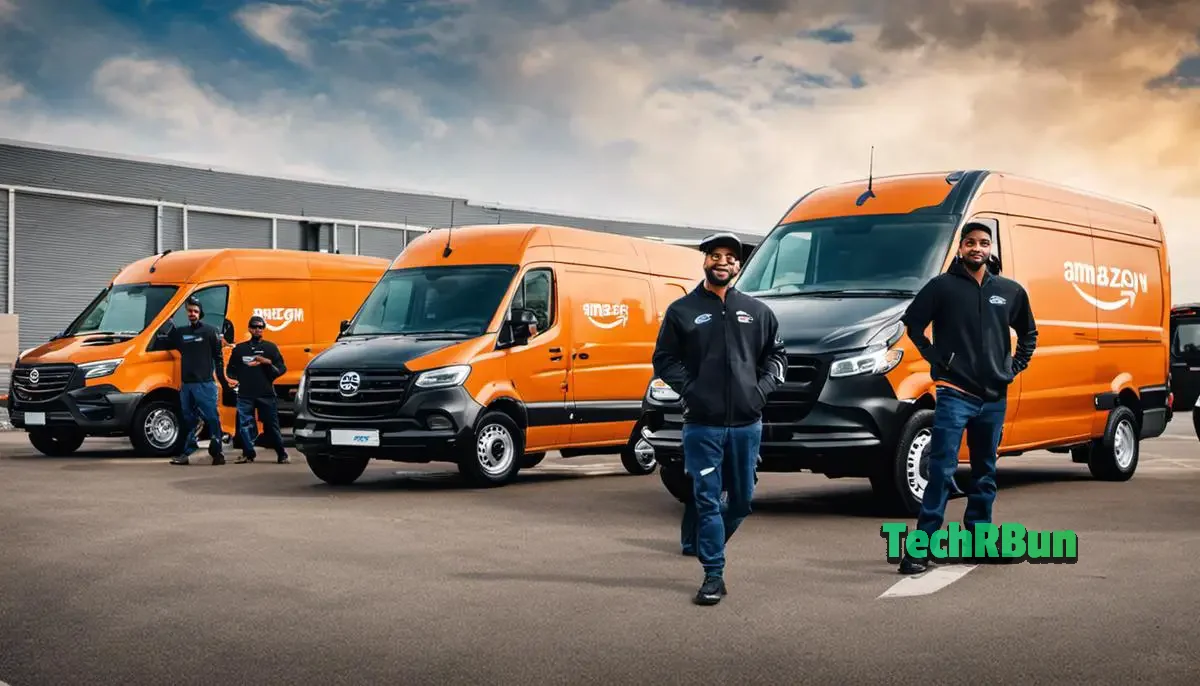
A Day in the Life of an Amazon Flex Driver
Amazon Flex Drivers are a crucial part of Amazon’s delivery network, ensuring that packages reach customers’ doorsteps in a timely and efficient manner. If you’re considering this role, here’s a look into what a typical day might entail:
Pre-Shift Preparation
Your day usually begins with checking the Amazon Flex app for available delivery blocks. You’ll have the flexibility to choose when and how much you want to work based on your schedule and preferences.
Vehicle Check
Before you head out, you’ll inspect your vehicle to ensure it’s in good working condition. This includes checking tires, brakes, lights, and other essential components.
Package Pickup
After selecting your delivery block, you’ll head to a designated Amazon delivery station, known as a “DS,” to pick up the packages for the day. These packages are typically sorted and organized for efficient loading.
Loading Your Vehicle
With packages in hand, you’ll load them into your vehicle. The Amazon Flex app will provide instructions on how to organize packages to optimize your delivery route.
Using the Amazon Flex app, you’ll navigate your delivery route, which may include multiple stops. The app provides real-time GPS directions, making it easier to reach each destination.
Package Delivery
Your primary responsibility is delivering packages to customers. This might involve leaving them at their doorstep, obtaining a customer’s signature, or following specific delivery instructions, depending on the order type.
Flexibility
You have the freedom to adjust your route as needed to accommodate factors like traffic, road closures, or weather conditions. This adaptability is a significant benefit of the job.
Handling Issues
Occasionally, you may encounter challenges, such as inaccessible delivery locations, missing customers, or damaged packages. In these situations, you’ll use the app to report issues and follow Amazon’s guidelines for resolution.
Breaks
You’ll have scheduled breaks during your shift, which allow you to rest and recharge. Staying hydrated and taking short breaks is essential to maintain your energy throughout the day.
Ongoing Communication
Communication with Amazon Flex support is possible through the app. If you encounter problems or have questions, you can contact support to receive assistance.
Post-Shift Completion
As your shift concludes, you’ll finish your deliveries and return any undelivered packages to the designated Amazon delivery station. Ensuring that you’ve completed all deliveries accurately is crucial.
App Check-Out
Using the app, you’ll confirm the end of your shift, report any issues, and provide feedback. This is also when you submit your timesheet for payment.
Work-Life Balance
One of the key advantages of being an Amazon Flex Driver is the flexibility to set your work hours. Whether you’re looking for part-time or full-time employment, you can tailor your schedule to fit your needs.
In summary, a day in the life of an Amazon Flex Driver is marked by flexibility, independence, and responsibility.
The role is well-suited for those who enjoy being on the road, managing their own schedules, and contributing to efficient package delivery.
With the opportunity for flexible work hours and the potential for earnings based on the number of deliveries made, it’s a role that many find appealing and conducive to achieving a work-life balance that suits their needs.

Life as an Amazon Flex Warehouse Worker
If you’re considering a role as an Amazon Flex Warehouse Worker, it’s essential to have a clear understanding of what your daily routine might look like.
Working in one of Amazon’s fulfillment centers can be fast-paced and rewarding. Here’s a glimpse into a typical day in the life of an Amazon Flex Warehouse Worker:
Morning Preparation
Your day typically begins with arriving at the fulfillment center ahead of your scheduled shift. You might have the option to choose from various shift times that align with your schedule and preferences.
Check-In and Safety Protocol
Upon arrival, you’ll go through a check-in process, which may include temperature checks and safety measures, to ensure the well-being of all employees.
Morning Meeting
Many fulfillment centers start the day with a brief team meeting to discuss goals, priorities, and any specific tasks for the day. Safety procedures and important updates may also be covered.
Picking and Packing
A significant portion of your day involves picking items from the storage shelves, often guided by a handheld scanner or a voice-guided system. Your goal is to find and collect the items efficiently.
Packaging and Quality Control
Once you’ve picked the required items, you’ll move to a packing station. Here, you’ll carefully package the products according to Amazon’s specific standards to ensure that they are ready for shipment.
Shipping and Labeling
After packing, you’ll affix labels, ensuring the correct shipping information is on the packages. This step is critical in making sure the right orders reach customers on time.
Loading and Unloading
You might also be involved in loading the packaged items onto delivery trucks or unloading incoming shipments of goods. This part of the job is physically demanding, as you’ll be handling packages of varying sizes and weights.
Breaks
Fulfillment centers typically offer scheduled breaks to allow workers to rest, eat, and recharge. Taking regular breaks is important for maintaining energy and productivity throughout the day.
Ongoing Training
Amazon places a high emphasis on safety, and you’ll have opportunities for ongoing training to ensure you’re up-to-date with the latest safety protocols and equipment usage.
Shift Conclusion
As your shift comes to an end, you’ll wrap up your tasks and prepare your work area for the next shift. Time management and efficiency are key, as there is often a quick turnaround between shifts.
Post-Shift Check-Out
After your shift, you’ll go through a check-out process, where you might report any issues, return equipment, and complete any necessary paperwork.
Personal Development
If you’re interested in advancing your career within Amazon, you may have opportunities for skill development and career growth. Many Amazon employees have found paths to supervisory or managerial roles within the company.
Work-Life Balance
One of the benefits of working as an Amazon Flex Warehouse Worker is the ability to choose shifts that fit your schedule. Whether you prefer part-time or full-time work, Amazon Flex provides options to accommodate various lifestyles.
In conclusion, a day in the life of an Amazon Flex Warehouse Worker is characterized by a fast-paced, team-oriented environment.
The job requires efficiency, attention to detail, and a commitment to safety. It’s an ideal role for those who thrive in structured settings and enjoy the satisfaction of contributing to the efficient distribution of products to customers.
With the opportunity for flexible hours and room for growth, it’s a career choice that many find rewarding and fulfilling.
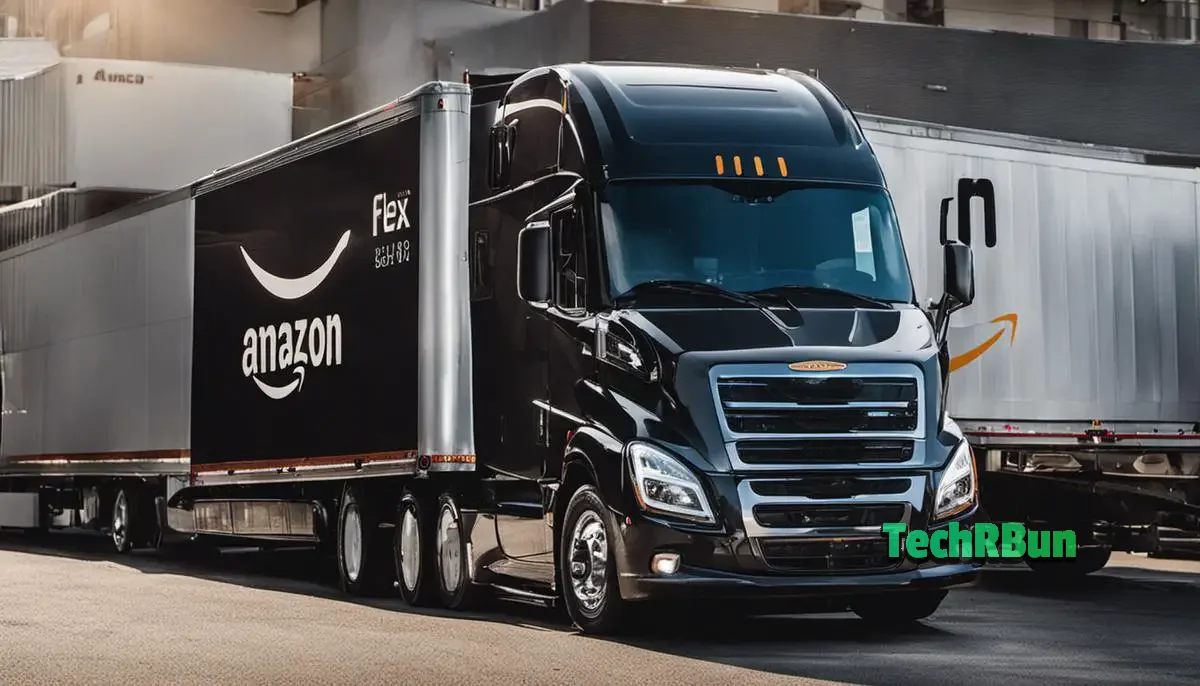
Amazon Flex Driver vs Warehouse Worker: Which Pays More?
The earnings potential for Amazon Flex Drivers and Amazon Flex Warehouse Workers can vary significantly based on several factors, including location, hours worked, and individual performance.
It’s important to note that both roles offer competitive compensation, but they have different structures and considerations when it comes to pay.
Amazon Flex Driver
- Earnings Structure: Amazon Flex Drivers are typically paid per delivery block or shift. The pay rate can vary by location, with some regions offering higher base rates due to factors like cost of living.
- Variable Earnings: The more delivery blocks you work and the faster you complete deliveries, the more you can earn. Additionally, you may receive tips from customers for excellent service.
- Flexible Earnings: As an independent contractor, your earnings as a driver depend on the number of shifts or blocks you choose to work. You can have the flexibility to work part-time or full-time based on your availability and preferences.
Amazon Flex Warehouse Worker
- Hourly Wage: Warehouse workers typically receive an hourly wage. Amazon is known for offering competitive pay, and the hourly rate can vary by location, job type, and experience.
- Overtime Pay: If you work more than your scheduled hours in a day or week, you may be eligible for overtime pay, which can significantly boost your earnings.
- Steady Income: Warehouse workers receive a consistent paycheck based on the hours they work, making it a reliable source of income.
In terms of which role pays more, it depends on several factors:
- If you work as an Amazon Flex Driver and are efficient in completing deliveries and receive tips, you can potentially earn a competitive income, especially during peak delivery times or in high-demand areas.
- On the other hand, if you work as an Amazon Flex Warehouse Worker and consistently put in more hours, you may benefit from a steady, reliable income with the potential for overtime pay, which can increase your overall earnings.
To determine which role pays more in your specific circumstances, you should consider your location, preferred work hours, and whether you prefer the flexibility of the driver role or the structured work hours of the warehouse worker role.
Ultimately, the choice between the two roles should align with your lifestyle, work preferences, and income goals. It’s worth noting that both roles have their unique advantages, and the decision should not be solely based on potential earnings but also on factors such as work environment, job responsibilities, and personal preferences.
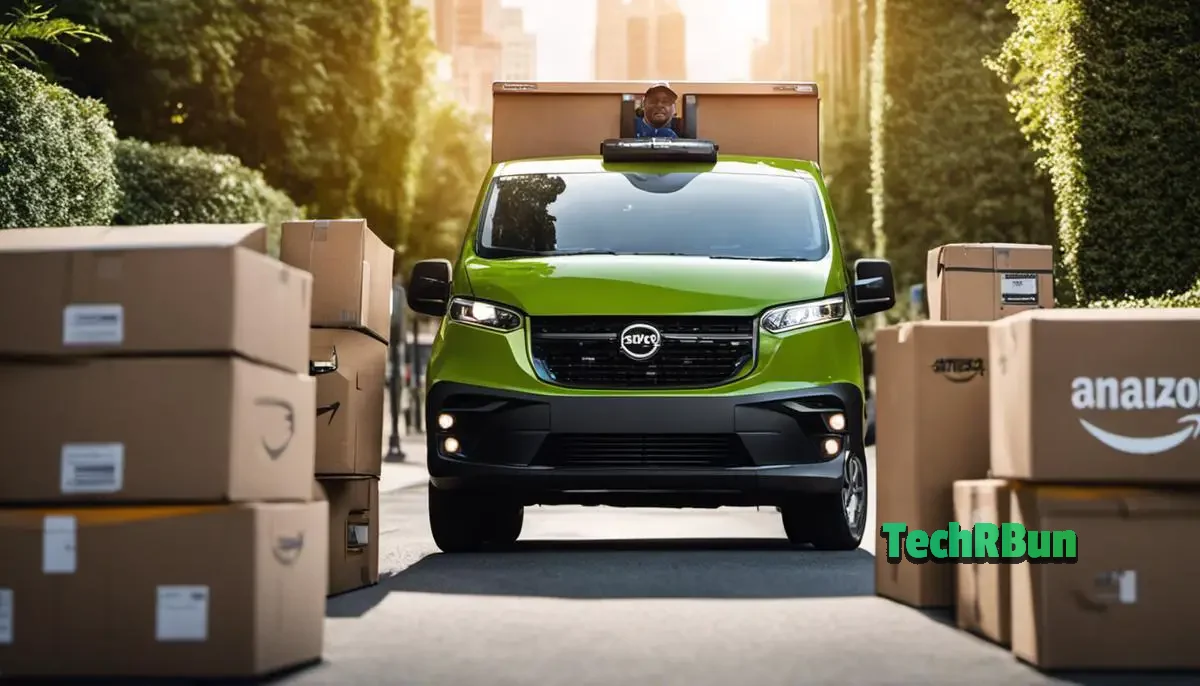
Influence of Market Trends on Amazon Flex Roles
In a world driven by the ebb and flow of market dynamics, it’s essential to recognize how market trends can significantly impact various aspects of the gig economy, including roles like Amazon Flex Drivers and Amazon Flex Warehouse Workers.
These roles are not isolated from the broader economic landscape, and understanding the interplay between market trends and these positions is crucial. Here, we explore the ways in which market trends have influenced Amazon Flex roles.
Gig Economy Growth
One of the prominent market trends shaping Amazon Flex roles is the continued growth of the gig economy. The desire for flexibility in work schedules and the ease of accessing gig work through digital platforms have led to more people seeking opportunities in this sector. Amazon Flex roles cater to this trend by offering flexibility in work hours, which makes them attractive to individuals seeking supplementary income or work that accommodates other commitments.
E-Commerce Boom
The explosion of e-commerce is another dominant factor affecting Amazon Flex roles. The rise of online shopping, particularly during the COVID-19 pandemic, has increased the demand for delivery services. Amazon, as one of the world’s largest e-commerce platforms, has seen exponential growth in its business, leading to an elevated need for both drivers and warehouse workers to fulfill orders efficiently.
Competitive Compensation
Market trends have played a role in influencing compensation for Amazon Flex roles. As labor markets become more competitive, Amazon has adjusted its pay rates to attract and retain a skilled and motivated workforce. This can result in improved earning potential for drivers and workers.
Focus on Safety
Safety has become a paramount concern in the wake of public health crises. The market trend toward a heightened focus on health and safety has affected Amazon Flex roles by necessitating changes in work processes, protocols, and sanitation measures. These adjustments ensure the well-being of employees and customers.
Technological Advancements
Advancements in technology, including route optimization, GPS tracking, and real-time data analysis, have improved the efficiency and effectiveness of Amazon Flex roles. These technological trends have enabled better route planning and coordination, enhancing the overall experience for drivers and warehouse workers.
Green Initiatives
Environmental consciousness and sustainability have become influential market trends. Amazon, like many companies, has made commitments to reduce its carbon footprint. This has translated into initiatives like electric delivery vehicles, which can impact the role of Amazon Flex Drivers by providing cleaner and more eco-friendly transportation options.
Evolving Customer Expectations
Changing customer preferences and expectations also play a role in shaping Amazon Flex roles. Customers now expect faster and more reliable deliveries. This has led to an emphasis on improving delivery efficiency, reducing errors, and ensuring timely fulfillment of orders.
Work-Life Balance
The desire for better work-life balance is a prevailing market trend. Amazon Flex roles address this by offering part-time or full-time options with flexible schedules, allowing individuals to align their work with personal commitments.
In conclusion, the influence of market trends on Amazon Flex roles is undeniable.
The gig economy, e-commerce growth, compensation adjustments, safety measures, technological advancements, sustainability initiatives, customer expectations, and the pursuit of work-life balance all contribute to the evolving landscape of these positions.
Adapting to these trends is crucial for Amazon Flex and other gig economy platforms to remain competitive, attract talent, and deliver high-quality services to customers. As market trends continue to shift and evolve, so too will the roles and opportunities within the Amazon Flex ecosystem.
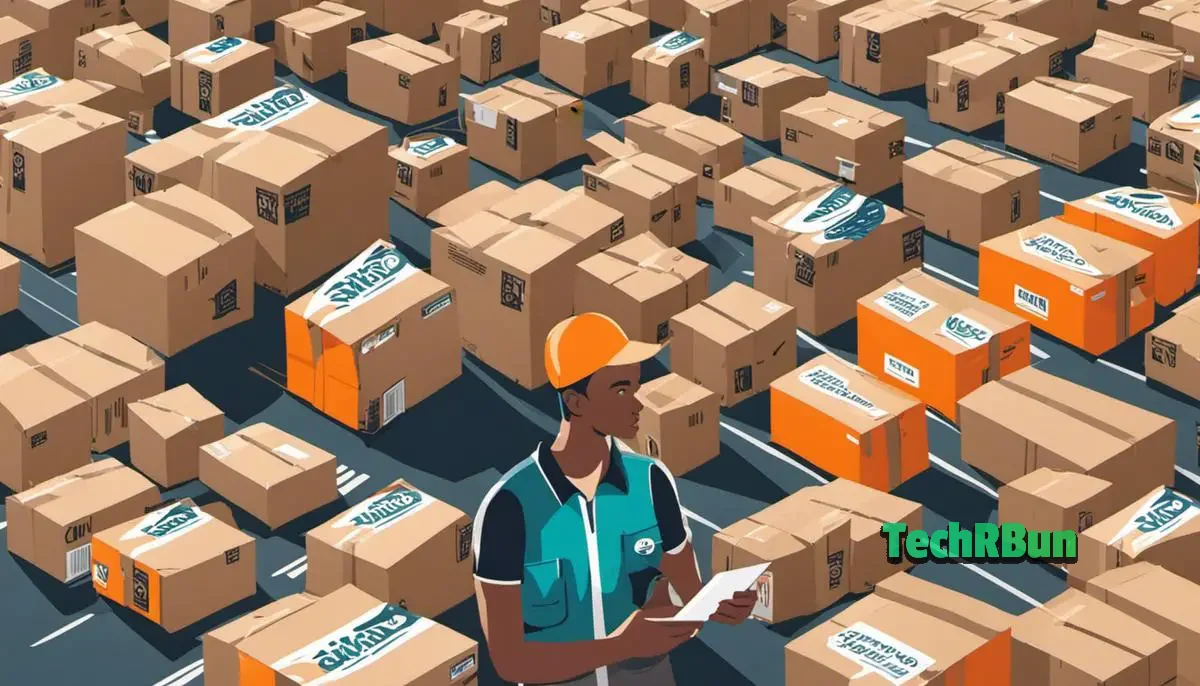
Conclusion
Navigating the rapidly evolving landscape of ecommerce and the gig economy requires an understanding of not only the tasks and responsibilities of particular roles, but also the larger economic and market trends fueling that evolution.
As we have seen from the examination of the Amazon Flex Driver and Warehouse Worker roles, there are considerable differences in the work environment, compensation, benefits and challenges associated with each.
However, what they share in common is their central role in Amazon’s logistical network and their likely continued adaptation in parallel with trends in artificial intelligence, labor laws, and environmental consciousness. Amidst these changes, workers must continually assess which roles align most closely with their personal capabilities and career ambitions.







